Flesh and Blood is a classic trading card game where players take the role of legendary heroes in the mythical world of Rathe. The game features a cast of different heroes, ranging from Ninjas, Warriors, Wizards, Guardians, and more. Once you have a hero picked out, it’s time to suit them up with armor and
weapons and prepare for battle.
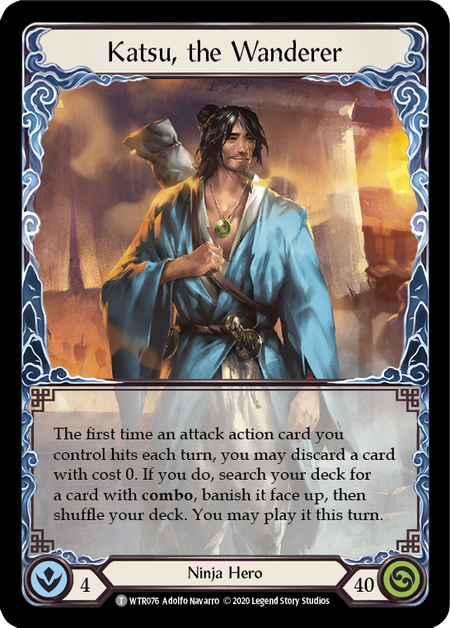
If Katsu is your hero, your deck will contain Ninja and generic cards. Katsu, the Wanderer’s hero type is Adult, which determines what formats they can be played in. Heroes have two key numbers in the bottom corners of their card. The left number is the hero’s intellect, which determines your hand size. The right number is the hero’s life total.
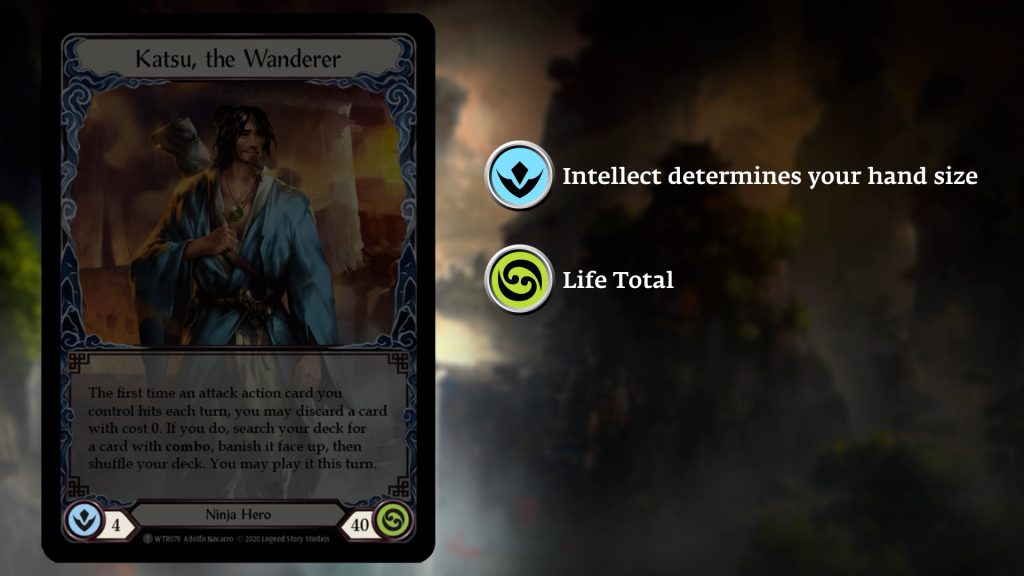
If we were playing a game with Katsu, the Wanderer as our hero, we would begin with the starting hand of four cards and 40 life.
The objective of the game is to reduce your opponent’s life total to zero, but unlike most TCGs, where players start at their weakest and get stronger as the game goes on, Flesh and Blood starts each player at their strongest and has them wear down over the course of the game – just like one would in a lengthy battle.
This means your hero comes prepared with the weapons and armor of your choosing at the start of the fight. Weapons and equipment always start on the arena and do not shuffle into the rest of your deck. Heroes also have the choice of using either a single two-handed weapon or two one-handed weapons.
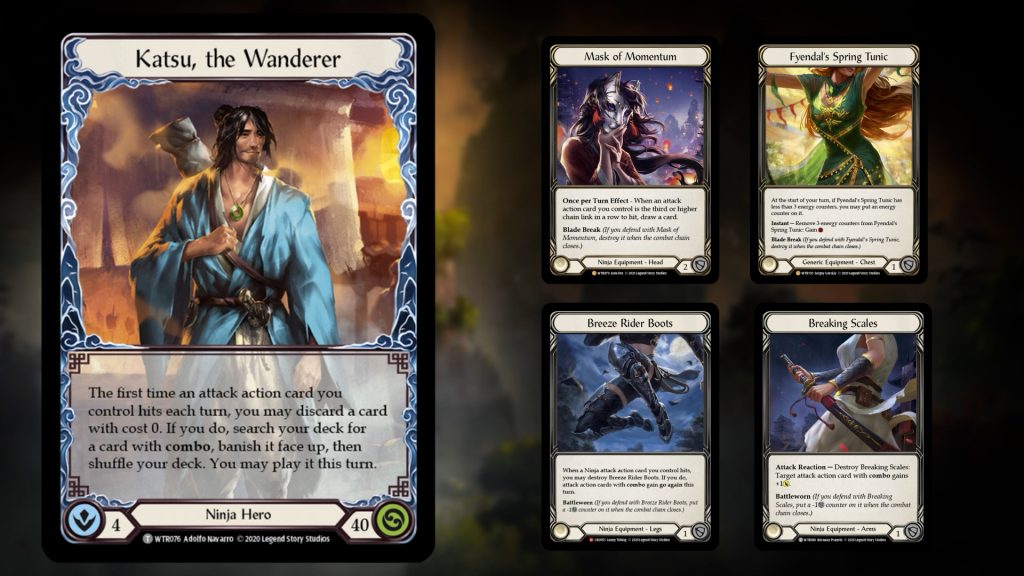
Next, we choose the armor we want to use. Here we have the Mask of Momentum for the headpiece, Fyendal’s Spring Tunic for chest, Breeze Rider Boots for legs, and Breaking Scales for arms. Note that the head, boots, and arms are all Ninja specific equipment, but the chest piece is generic, so it could go on any hero.
Now that our hero is ready to battle, let’s get familiar with how most cards function in Flesh and Blood.
Many cards in Flesh and Blood have multiple uses. For example, cards with resource costs allow you to attack your opponent or defend from their attacks. Let’s look at Leg Tap as an example.

The upper right hand corner of the card shows the resource costs of the card. Leg Tap costs one resource to play, so in order to gain the resources needed to play Leg Tap, we need to pitch a card in our hand.
When we pitch a card, it’s discarded into the Pitch Pile to indicate it has been used to gain resources this turn. The pitch value of a card is shown in the upper left hand corner.
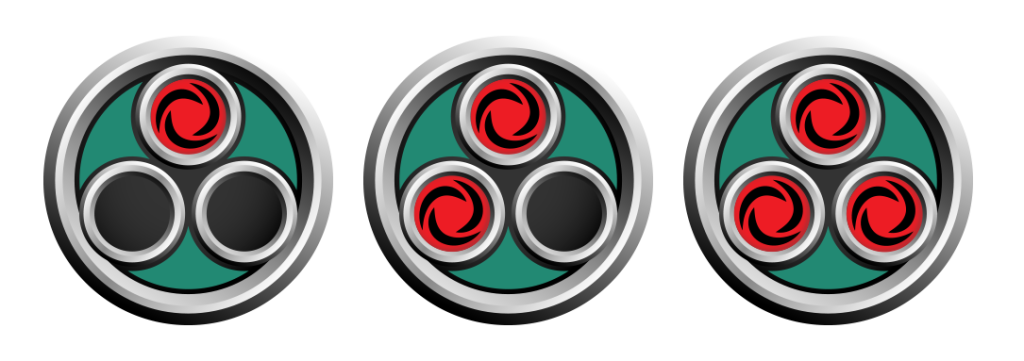
Each card has three “sockets” that can be filled, which indicate the pitch value. This version of Leg Tap, for example, can create three resources when pitched. The pitch value is also indicated by a blue, yellow, or red colored strip at the top of the card. Blue cards can be pitched for three resource points, yellow cards for two, and red cards for one.
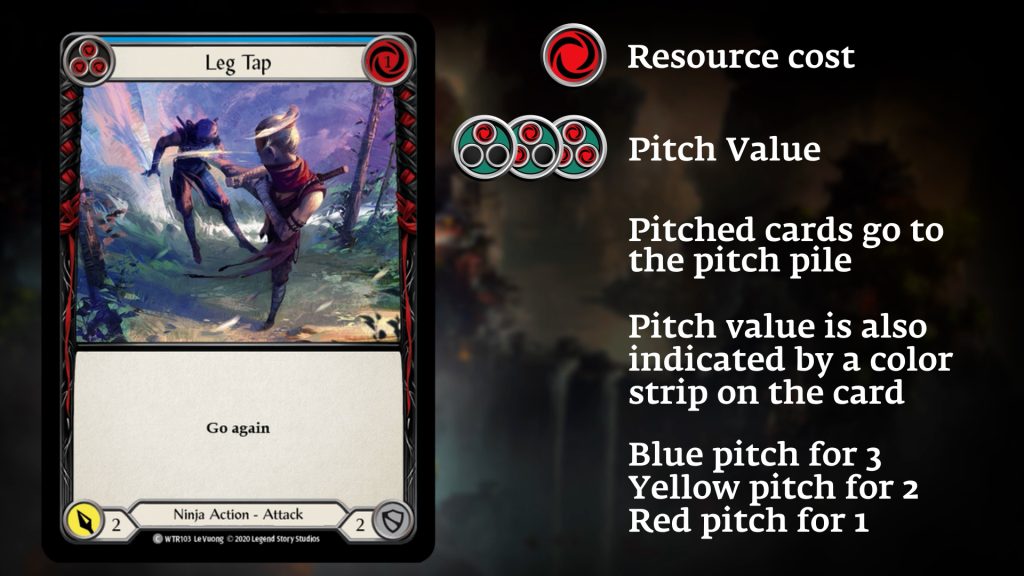
Many cards come in three versions, each with the same name, but differing pitch values, which slightly changes how they play. Looking again at Leg Tap, the blue version attacks for two, yellow attacks for three, and red attacks for four. In the bottom left, you see how much Leg Tap attacks for indicated by a number next to the spearhead in a yellow circle.
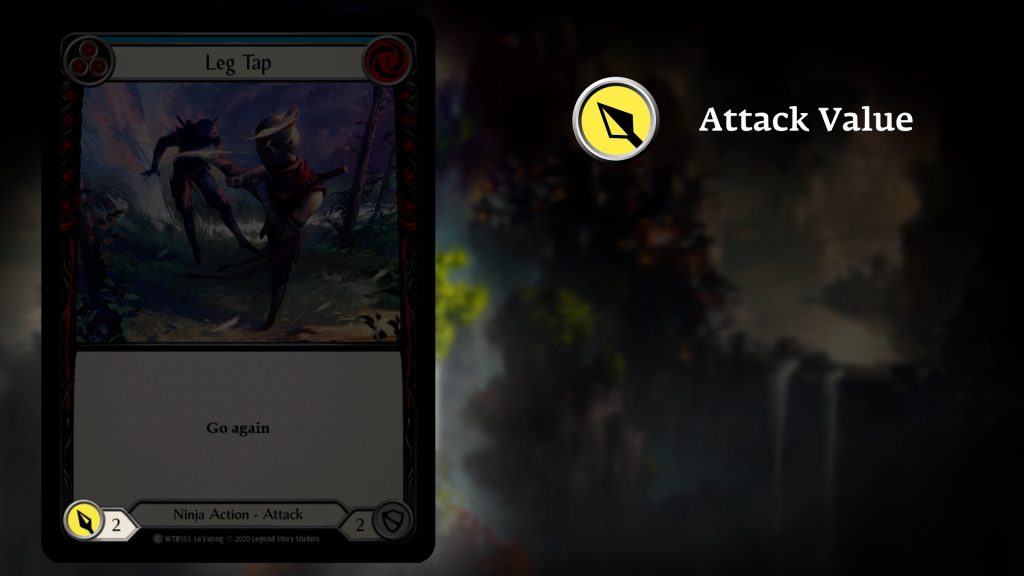
Leg Tap’s defense value is indicated by the number next to the shield in the bottom right.
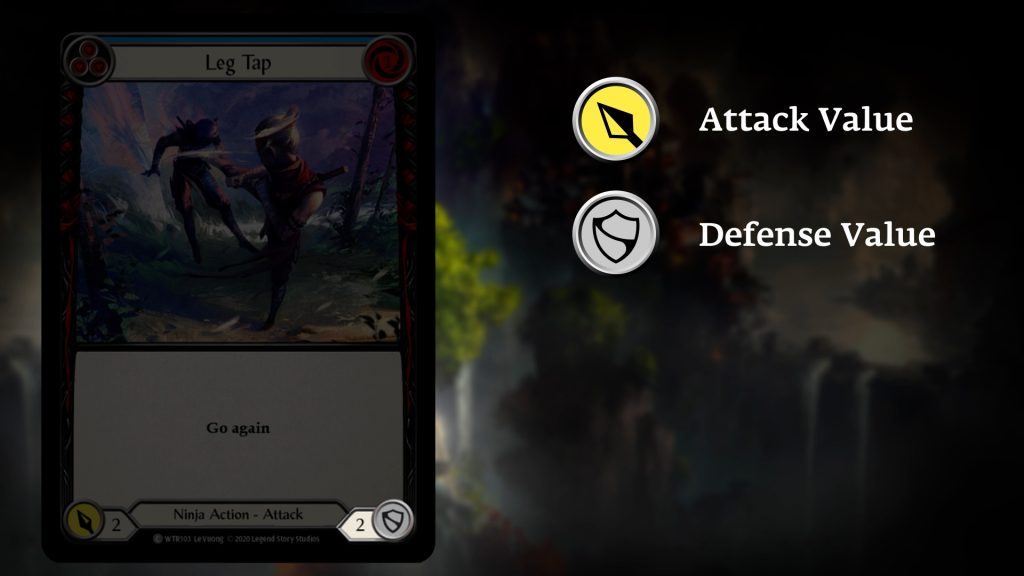
Looking at the type line of Leg Tap, we can see it as an attack action. To play an attack action card or use an ability with the word “action” in it, you need an action point. Each player starts their turn with one action point. Many actions in the game have the text “Go Again”, which gains you another action point. Action points do go away at the end of each turn if they’re not used, so make sure to use them if you can.
Let’s look at an example of playing a card and using resources. We begin our turn with an action point and start by playing Leg Tap. Leg Tap requires a resource to play, so we can pitch a copy of Head Jab from our hand for three resources, using one to pay for Leg Tap. The other two resources can be used for the remainder of the turn.
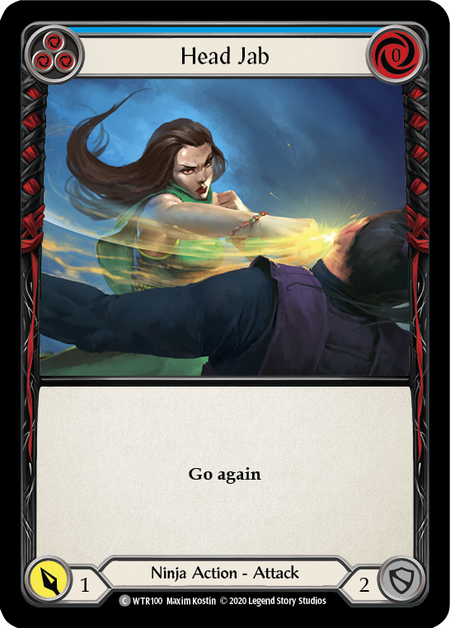
With our remaining resources, we can play another card from our hand, or we can attack with one of our copies of Harmonized Kodachi, going down to one resource.
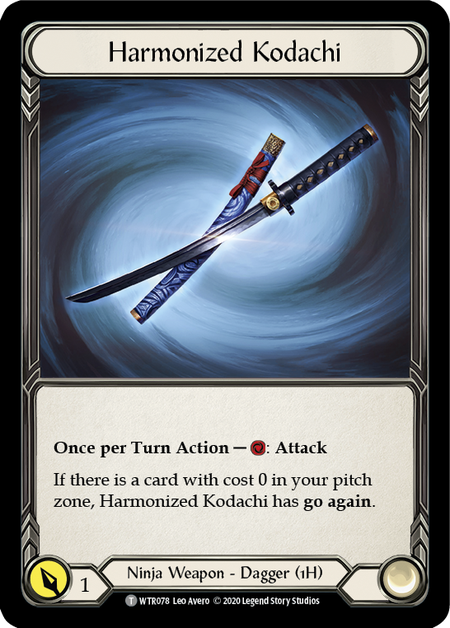
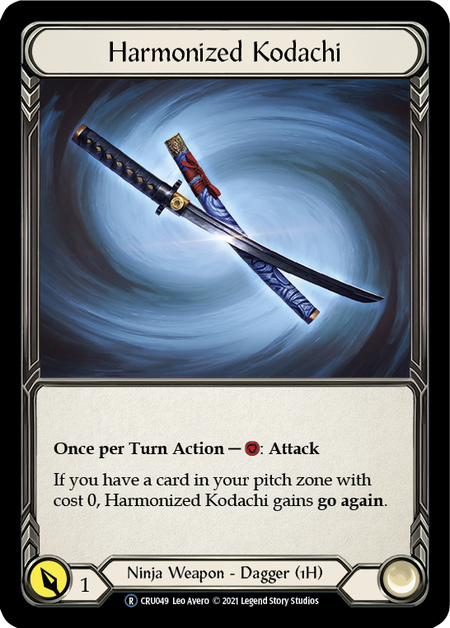
It is important to note that the order of playing and paying costs for cards matters in Flesh and Blood. First, you declare the card you are playing, then you pitch enough cards to pay for it. You can’t pitch cards without anything to pay for.
The most common type of card in Flesh of Blood is the attack action. These cards are primarily how you attack and deal damage to the opposing hero. They vary in resource cost, attack power and how they can defend. Non-attack action cards are just that – actions that don’t involve the act of attacking. Some strengthen your next attack or give your next attack Go Again. They can also provide other options, like drawing cards or making tokens.
Non-attack actions use an action point, just like action cards, so make sure you’re finished making actions or have a way to gain Go Again when playing one. Attack reactions can only be played during the attack reaction step. This comes after you have declared your attack and your opponent has had a chance to defend with cards from their hand. This is where you can try to give your attack more power to get extra damage through, or to gain an additional effect. Reactions do not require an action point to play.
Defense reactions can be played in the defense reaction step, which comes after the attack reaction step. Defense reactions don’t require an action point to play, but some do have resource costs that need to be paid. Since instant cards can be played at any time, you don’t need an action point to play them, but their resource cost must be paid.
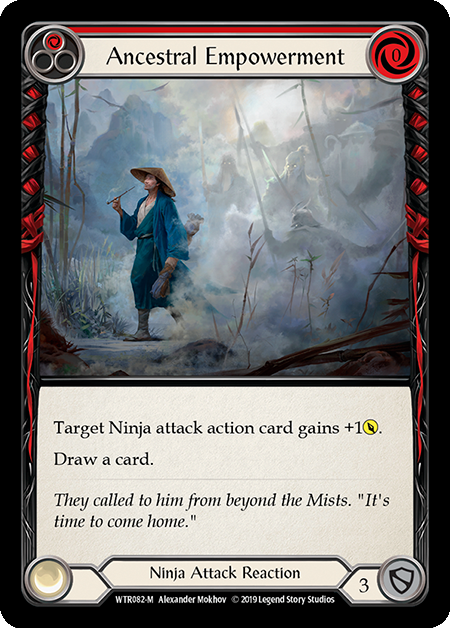
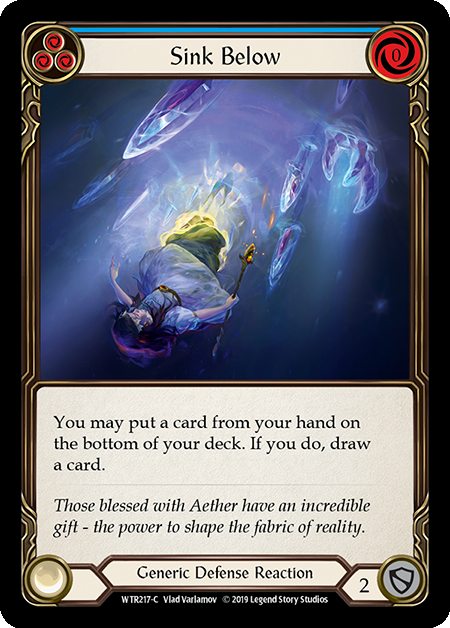
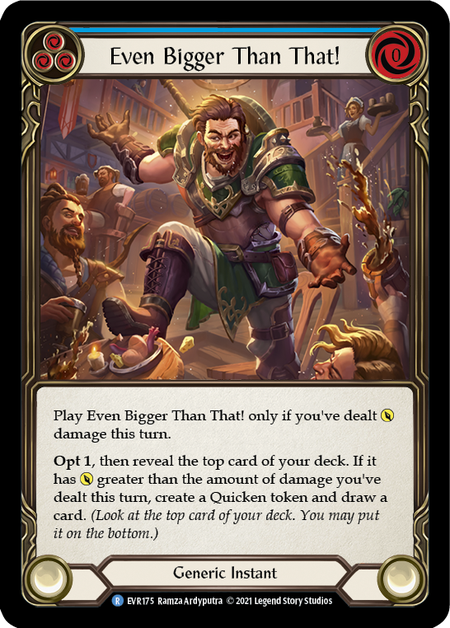
Instant cards have a wide range of abilities that can draw cards, grant other cards Go again, disrupt your opponent’s attack, or even gain life. While instants can be pitched for resources, they do not have defense values, so they do come at a cost when building your deck.
Combat is the bread and butter of Flesh and Blood. The combat chain is where the majority of gameplay happens and occurs when a player plays an attack, action, or attacks with a weapon. The opponent then has the option to defend with any number of cards from their hand. There’s no cost to defend with cards and all defending cards are declared at the same time.
Players can also choose to defend with their equipment. Usually, this will weaken the equipment or destroy it altogether, so make sure you’re ready to part ways with it if you use it to defend. After the defense is declared, players move to the reaction window, starting with the attack reaction step. After the attacker plays an attack reaction or passes priority, the defending player can cast defense reactions in the defense reaction step.
If the defending player doesn’t play a defense reaction, damage is calculated and applied to heroes as necessary. If the defending player does play a defense reaction, another reaction window is created, and the cycle begins again. Attack and defense reactions can be played until each player has passed priority. Once all combat on the chain link is finished, it’s time to calculate damage.
Damage is calculated by comparing the total number of power from the attack and attack reactions to the value of the defense values of all cards in the chain link. If the total power of the attack is greater than the total defense value, the defending hero takes damage equal to the difference. If a hero takes damage this way, the attack is considered to have hit which will trigger any on hit effects from the attacker’s cards.
If the attack had Go again, the attacking player can choose to attack again with another attack action or weapon, creating chain link two. Multiple chain links can be made if the attacking player has two action points to keep it going. Some attacks like Flying Kick and Whirling Mist Blossom get better if you play them on later chain links.
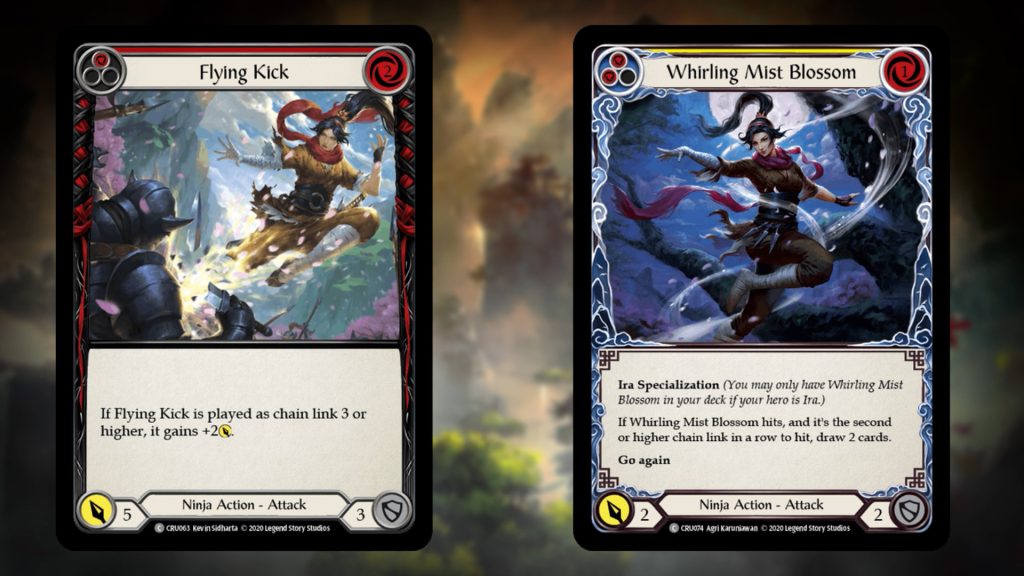
If the active player has no more action points or attacks to play, the combat chain closes and any weapon that attacked will return to the weapon zone. All other cards on the combat chain go to the graveyard. Once you’re out of action points that have no other plays to make, you move to the end phase.
Cards in the pitch zone go back to the bottom of your deck in any order you like. It is common in Flesh and Blood for players to go through their entire deck, so keep that in mind when ordering cards from your pitch zone on the bottom of your deck.
From here, you can then choose to place a card from your hand into the arsenal zone face down. Cards in your arsenal can be played on a later turn, allowing you to have access to an additional card on a future turn.
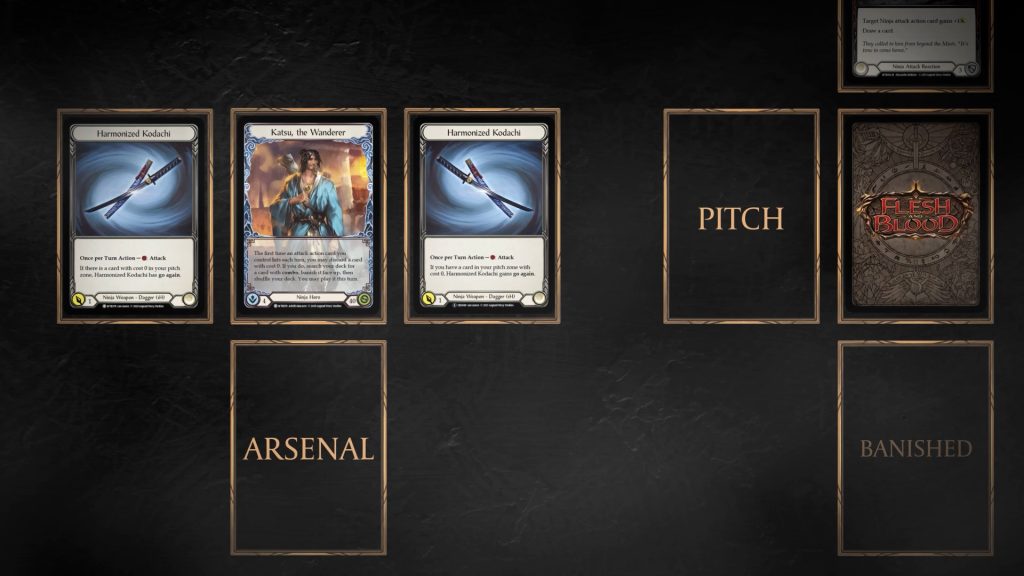
Cards in your arsenal can only be played, meaning you can’t pitch a card for resources from your arsenal or defend with it like a card from hand. A defense reaction can be played from the arsenal by paying its cost just like any other action card or instant.
You can only have one card in your arsenal at a time and the only way to clear your arsenal is by playing the card from it.
Lastly, you end your turn by drawing cards until you reach your hero’s intellect level. Remember, intellect isn’t limited, so if you end your turn with more than four cards, you don’t have to discard. Also of note, if it’s the first turn of the game, only the active player refills their hand.
